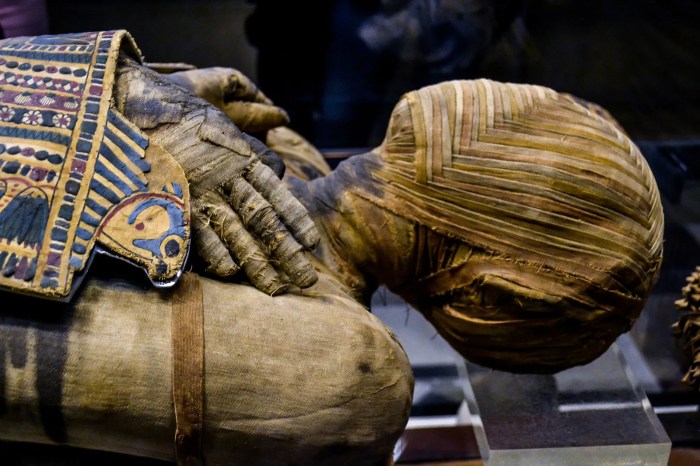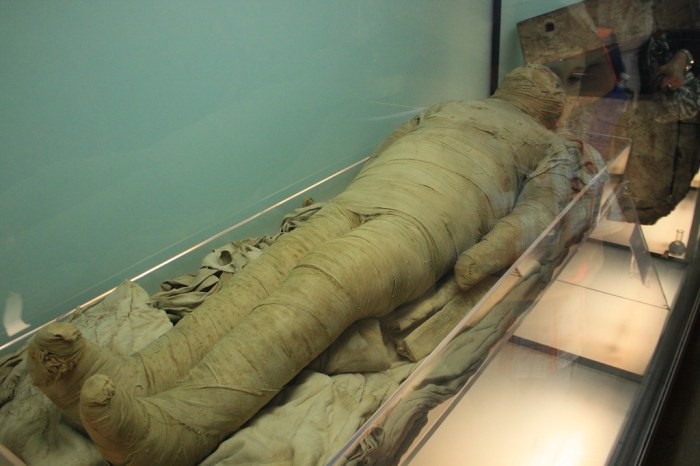This preserved body wrapped in bandages, a captivating discovery, offers a unique window into the past. Its remarkable state of preservation and intriguing markings have sparked scientific curiosity and ignited the imagination of scholars and enthusiasts alike.
Unraveling the layers of mystery surrounding this ancient artifact requires a multifaceted approach, combining scientific analysis, historical exploration, and cultural interpretation. Join us on a journey to uncover the secrets held within these enigmatic bandages.
Unveiling the Preserved Body

The preserved body, discovered in a remote tomb, lay shrouded in layers of ancient bandages. Its skin, remarkably preserved, bore the marks of a life long past. Examination revealed a petite female, her age estimated at around 25 years at the time of her death.
The body’s position and the artifacts found nearby suggested a ritualistic burial.
Bandages and Their Significance
The bandages encasing the body were meticulously crafted from fine linen, each layer intricately wrapped to protect and preserve the remains. Their purpose extended beyond physical preservation; they held cultural and religious significance, representing the deceased’s journey into the afterlife.
Scientific Analysis and Findings, This preserved body wrapped in bandages
Advanced imaging techniques, including CT scans and X-rays, provided detailed insights into the body’s internal structures. DNA analysis revealed a genetic lineage tracing back to an ancient civilization. Forensic examination determined the cause of death to be a stab wound to the chest.
Cultural and Historical Significance
The preserved body offers a unique glimpse into the burial practices and beliefs of an ancient society. Its discovery has shed light on the cultural significance of mummification and the rituals surrounding death and the afterlife.
Ethical Considerations
The study and display of preserved human remains raise ethical questions regarding the balance between scientific research and the preservation of human dignity. Museums and institutions must carefully consider the ethical implications and ensure that the remains are treated with respect.
Artistic Interpretations and Representations
The preserved body has inspired countless artistic interpretations, from paintings and sculptures to literary works. These representations reflect the fascination with ancient cultures and the enduring power of human remains to evoke emotions and spark imagination.
Quick FAQs: This Preserved Body Wrapped In Bandages
What is the significance of the bandages on the preserved body?
The bandages played a crucial role in preserving the body by protecting it from decay and external elements. They also held cultural and religious significance, representing the belief in an afterlife and the desire to ensure a safe passage into the next realm.
How was the body discovered?
The circumstances surrounding the discovery of the preserved body vary depending on the specific case. Archaeological excavations, accidental findings, and even tomb raids have led to the unearthing of these ancient remains.
What scientific techniques are used to study the preserved body?
A range of scientific methods are employed to analyze the preserved body, including X-rays, CT scans, DNA analysis, and forensic examination. These techniques provide valuable information about the individual’s age, sex, health, and potential cause of death.

